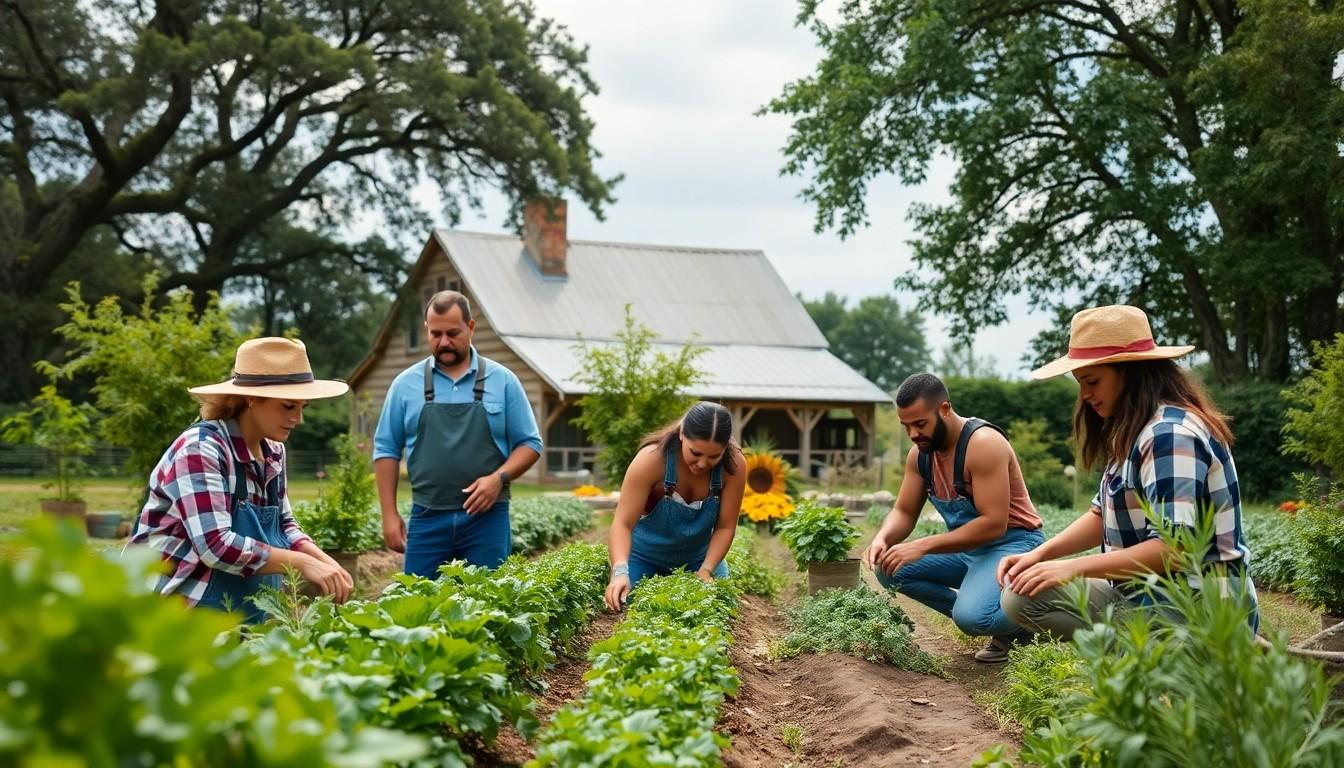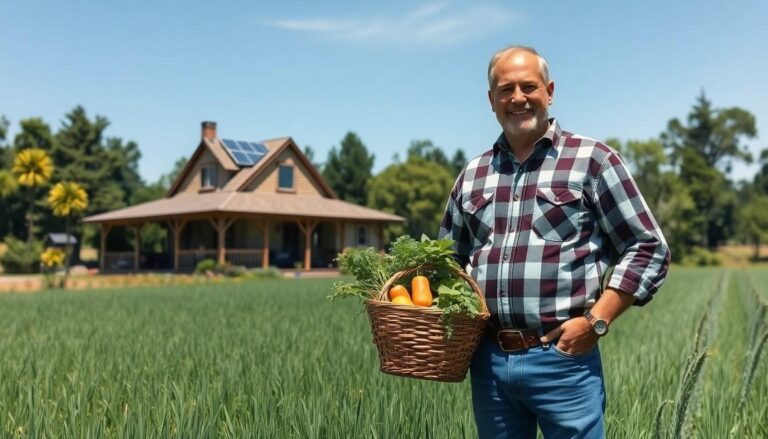Imagine waking up to the sound of chirping birds and the smell of fresh coffee brewing on your very own patch of land, all without breaking the bank. Free land for homesteading isn’t just a fantasy; it’s a real opportunity for those ready to embrace a simpler, more self-sufficient lifestyle. Whether you’re dreaming of a cozy cabin or a sprawling garden, this is your chance to turn those visions into reality.
Free Land for Homesteading
Free land for homesteading presents unique opportunities for aspiring homesteaders. Many states offer programs encouraging settlement in rural areas. These plots often require individuals to demonstrate intent to build a home and cultivate the land.
States like Alaska, Kansas, and Nebraska provide specific programs. Alaska’s land lottery system enables participants to apply for parcels, while Kansas has a long-standing homesteading program. Nebraska offers homestead exemptions to encourage home ownership and agricultural development.
Some counties within states might also offer land for taxes or fees. Situations vary, meaning properties can be acquired at minimal costs. Local governments seek to increase population and economic activity, making these offers appealing.
Homesteaders often use the land for gardens, livestock, or sustainable housing. Building community connections remains essential. Sharing resources and knowledge with neighbors fosters a supportive environment.
Checking local regulations and requirements is crucial before applying. Contingencies often include zoning laws and land use plans. Certain areas restrict activities, so understanding these rules can guide better decisions.
Many resources exist to navigate the process. Online platforms provide information on available properties and application methods. Additionally, local chambers of commerce sometimes have insights on homestead opportunities.
Engaging with existing homesteaders can provide valuable firsthand experiences. Online forums and local workshops create spaces for sharing tips and advice. Building a network not only enhances knowledge but also establishes support for new homesteaders.
Benefits of Homesteading on Free Land

Homesteading on free land provides numerous advantages that align with sustainable living. Individuals seeking a self-sufficient lifestyle often find these benefits compelling.
Environmental Sustainability
Living on free land promotes environmental sustainability through responsible land use. Gardens provide fresh produce, reducing reliance on commercial agriculture. Wildlife conservation practices foster biodiversity, helping ecosystems thrive. Clean energy sources, like solar or wind, become more accessible in rural settings. Reforestation or maintaining green spaces enhances air quality and mitigates climate change. Each homesteader contributes to a healthier planet by adopting eco-friendly practices.
Economic Advantages
Free land for homesteading offers significant economic benefits. Reduced housing costs mean individuals can focus on other essentials, such as education or health care. Low-cost living enables savings, boosting long-term financial stability. Homesteaders often sell surplus produce or handmade goods, generating additional income. Lower property taxes can result from rural living, allowing funds to be allocated elsewhere. Such economic advantages lead to improved quality of life and enhance overall community well-being.
Challenges of Acquiring Free Land
Acquiring free land for homesteading presents various challenges. Individuals must navigate legal complexities and location-specific limitations.
Legal Considerations
Homesteaders encounter numerous legal hurdles. Local zoning laws dictate land use for agriculture or construction. Regulations may require permits for building, which complicates the initial planning. Additionally, some land programs demand strict compliance with state or federal guidelines. Failing to adhere to these legalities can jeopardize land acquisition. Trusting resources like local planning departments ensures a thorough understanding of regulations. Researching property history is vital to identify any potential liens or encumbrances. Determining eligibility for free land programs often depends on land use intentions and development plans.
Location Limitations
Location significantly impacts the feasibility of free land acquisition. Many programs exist in remote areas, limiting immediate access to amenities and services. Rural locations may lack infrastructure such as roads or utilities, creating challenges for development and daily living. Often, harsh weather conditions affect accessibility and land usability, necessitating careful consideration. Prospective homesteaders must also evaluate proximity to family and friends for support networks. Researching the local community’s resources, activities, and culture enhances the likelihood of a successful transition. Some seekers may need to balance the allure of free land with practical living conditions.
Success Stories of Homesteaders
Many individuals successfully embraced the homesteading lifestyle, transforming their dreams into reality. One remarkable story comes from Sarah and Mike, who settled in rural Alaska. They received free land through a state program and built a sustainable cabin, relying on solar panels for energy and growing vegetables in their greenhouse. Their experience illustrates the potential for self-sufficiency and resilience.
In Kansas, a couple named Tom and Lisa utilized free land to create a thriving mini-farm. They started with a few chickens and gradually expanded their operation, selling eggs and produce at local markets. Their success demonstrates how homesteaders can cultivate not only land but also a source of income.
Another inspiring case involves Jenna, who found land in Nebraska through a minimal-cost program. She focused on organic gardening and wildlife conservation, fostering a rich ecosystem around her property. This dedication to sustainability reflects the broader benefits of homesteading, as communities benefit from healthier environments and enhanced local biodiversity.
Additionally, Derek and Rachel’s experience highlights the importance of community connections. By actively engaging with local homesteading groups, they learned valuable skills, from building techniques to food preservation methods. Their journey emphasizes that homesteading isn’t just an individual endeavor; it involves creating supportive networks that enrich everyone involved.
These success stories showcase the diverse opportunities available through free land programs. Homesteaders find innovative ways to cultivate the land while building connections with their communities. Each story reinforces the idea that, with determination and resourcefulness, individuals can thrive in a homesteading lifestyle, turning potential challenges into rewarding experiences.
Resources for Finding Free Land Opportunities
Numerous online platforms provide access to free land opportunities. Websites like LandWatch and Craigslist frequently list land offers that can be suited for homesteading. Utilizing social media groups on Facebook or Reddit allows individuals to connect with others offering land for homesteading. Engaging in these communities often leads to discovering local resources and networking opportunities.
Local government websites present valuable information on state-sponsored land programs. Pursuing details about eligibility requirements and application processes helps streamline efforts to secure land. Each state may feature unique requirements, so researching local ordinances can prove beneficial. Many counties also have dedicated land or agriculture departments, offering additional resources and guidance.
Permaculture and sustainability workshops frequently share insights about land acquisition and development. Attending these events fosters connections with experienced homesteaders who already navigated similar challenges. Several non-profit organizations focus on promoting sustainable agriculture, providing workshops and educational resources. Gaining inputs from these organizations can enhance the understanding of homesteading principles and land management.
Networking with local chambers of commerce unveils community initiatives promoting population growth through land offers. Often, community programs support newcomers by providing low-cost land or resources to facilitate the settlement process. Engaging with local residents creates an opportunity to learn about essential services, schools, and community events that contribute to a successful transition.
Public libraries often serve as a hub for information on available resources. Many libraries maintain archives on local land use regulations and zoning laws, helping clarify critical legal requirements. Accessing these records can significantly aid prospective homesteaders in making informed decisions about land acquisition. Documentation pertaining to land history can highlight potential encumbrances or risks tied to specific properties.





